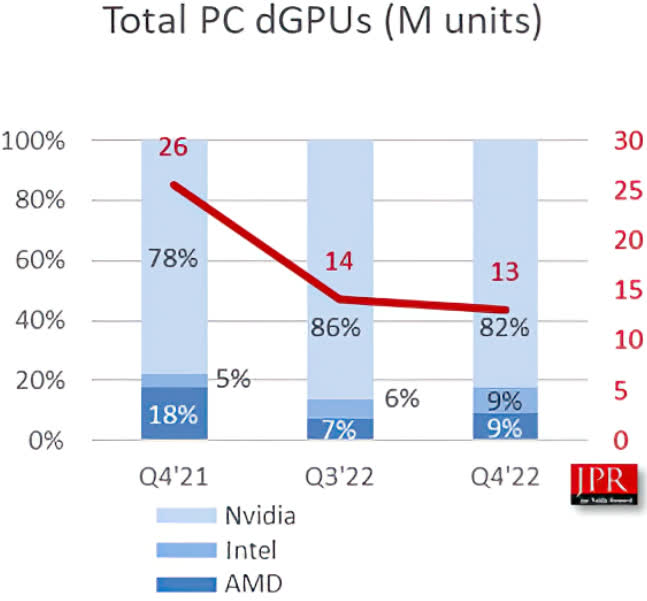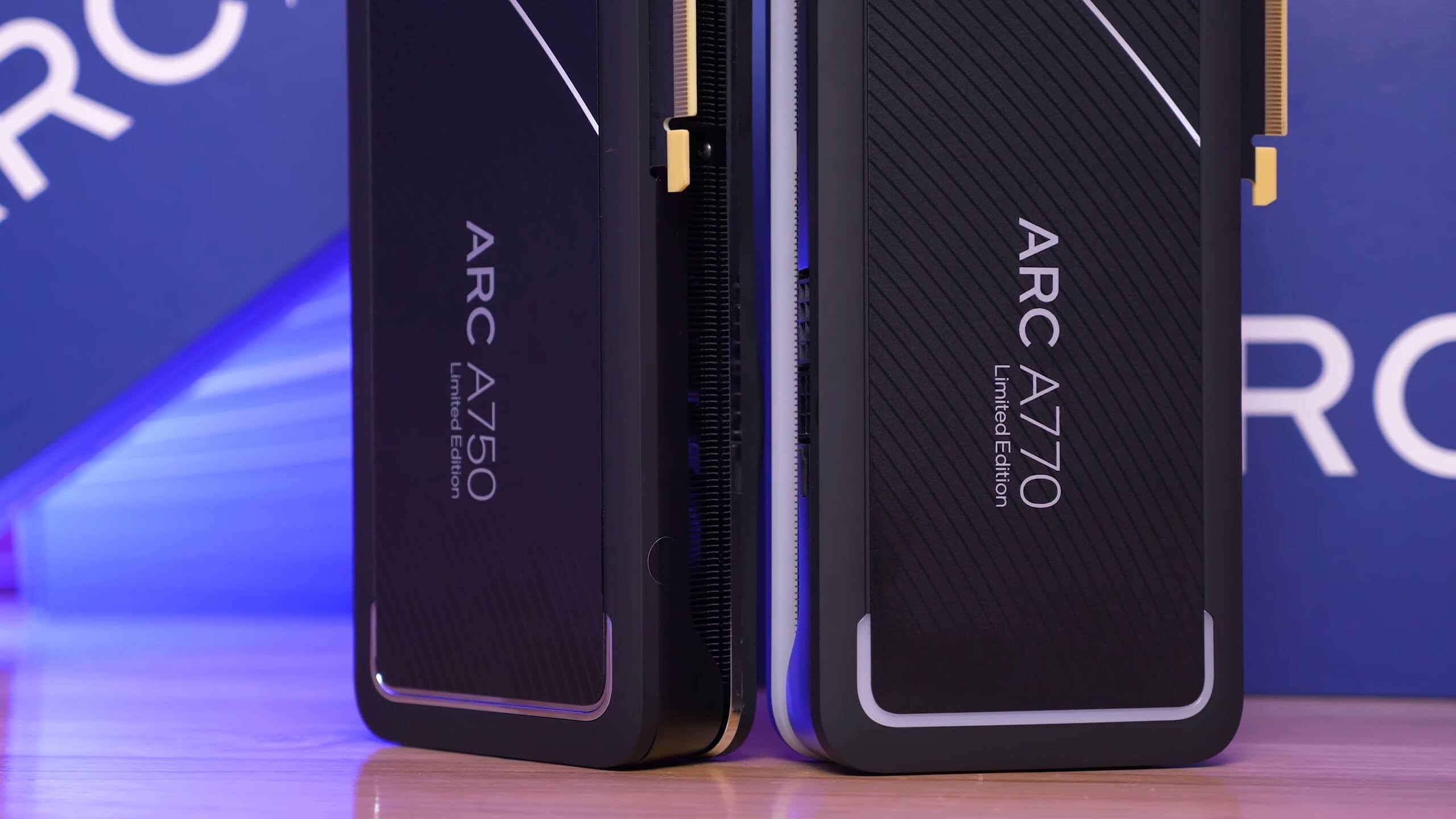The big picture: Fourth-quarter 2022 financials were dour for multiple tech industry sectors, but new data indicates that Intel's entry into the dedicated graphics card space hasn't failed. However, what the numbers mean depends on how much you trust Intel's reporting and how you see the overall market.
Correction (March 5): Our original story based on JPR's report, indicated Intel was capturing as much as 9% of the discrete GPU market with their Arc offerings, but this number was mistakenly inflated and it's likely closer to ~6%, which is still a solid effort from Intel.
According to Jon Peddie, out of 13 million discrete GPUs sold in the last quarter – for both desktops and laptops – Nvidia provided the bulk of it at 85% market share, AMD shipped 9% and Intel 6%. As noted in the story, these figures are not coming from actual unit sales, but are estimates calculated from revenue breakdowns and financial reporting. On the original report and analysis, JPR mistakenly included 60,000 Ponte Vecchio data center GPUs chips in Intel's share, which inflated their numbers.
Jon Peddie Research's Q4 2022 report (via Tom's Hardware) for the discrete GPU market indicates Intel has achieved a market share similar to AMD, though Nvidia still dominates. If the numbers are trustworthy, they suggest a successful freshman effort from Team Blue.
Team Green is still the undisputed master of dedicated GPUs, with 82 percent of the market last quarter. However, mere months after launching the Arc Alchemist graphics cards, Intel appears in the report with a nine percent market share - the same as AMD. Compared to the same quarter in 2021, Team Blue ate half of Team Red's market, but Nvidia increased its dominance.
However, research group head Jon Peddie takes Intel's numbers with a grain of salt. The nine percent market share comes from the company's estimates and ASPs, which Peddie considers soft data. AMD could still have had higher unit sales than Intel last quarter. Although only a handful of AMD cards appear on recent Steam hardware surveys, no Arc Alchemist cards have yet emerged.

Total Q4 2022 dedicated GPU sales, which include desktops, laptops, and embedded computers, reached 13 million units - a roughly 50 percent plummet from the 26 million GPUs sold in Q4 2021. That fall is steeper than the year-on-year declines in other sectors like CPUs and total GPUs (which includes integrated graphics, where Intel still dominates with a 72 percent market share).
Declining PC shipments dragged down the graphics card market last year despite product launches from all three vendors. Customers criticized Nvidia's high-end GeForce RTX 4000 series GPUs for their shockingly high prices. Meanwhile, AMD only managed to get its flagship Radeon RX 7000 cards out the door right before the end of the year, so their impact barely registers on Q4 2022 charts. Both companies are set to launch more mainstream entries in their latest GPU series this year.
Even if Team Blue hasn't caught up to AMD yet, the company confirmed that is a near-term target. On a recent podcast, Intel Fellow Tom Petersen acknowledged that they can't touch Nvidia as they are now, but hope to start a real competition with AMD. Petersen also mentioned Intel's upcoming follow-up GPU series - Arc Battlemage - saying the company wants to grow its market share by increasing value for mainstream models. The latest rumors indicate Battlemage may launch sometime in 2024.
